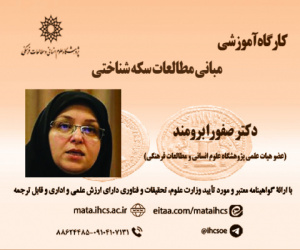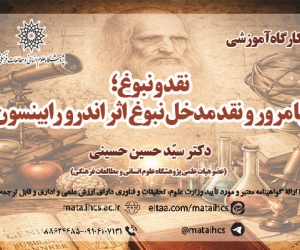تأثیر مدیریت ریسک بر پیاده سازی مدیریت دانش (مقاله علمی وزارت علوم)
درجه علمی: نشریه علمی (وزارت علوم)
آرشیو
چکیده
هدف: این پژوهش با هدف بررسی تأثیر مدیریت ریسک و مؤلفه های آن بر اجرای مدیریت دانش در شهرداری صحنه انجام شده است. تغییر رویکرد شهرداری ها از خدمت محور به بازارمحور و پروژه محور نیاز به مدیریت مؤثر دانش و اطلاعات جدید را افزایش داده است. در این راستا هدف اصلی پژوهش حاضر بررسی نقش مدیریت ریسک در بهبود اجرای مدیریت دانش در این سازمان ها است.روش: این پژوهش به روش ترکیبی (کمی و کیفی) انجام شد و جامعه آماری آن شامل 255 نفر از کارکنان شهرداری صحنه بود که از این میان 150 نفر به روش نمونه گیری طبقه ای تصادفی انتخاب شدند. ابزار گردآوری داده ها دو پرسش نامه استاندارد مدیریت دانش چومی تسنگ و مدیریت ریسک صمیمی بود که پایایی آن ها با استفاده از آزمون آلفای کرونباخ تأیید شد. در بخش کیفی پژوهش، مصاحبه های نیمه ساختاریافته با ذی نفعان کلیدی و کارشناسان شهرداری صحنه انجام شد تا چالش ها و ریسک های خاص مرتبط با اجرای مدیریت دانش شناسایی شود. در بخش کمی، پرسش نامه های استاندارد به نمونه منتخب توزیع شد و داده های جمع آوری شده با استفاده از نرم افزارهای SPSS و AMOS تحلیل شد. فنون آماری شامل تحلیل رگرسیون، ضریب همبستگی و ANOVA برای بررسی روابط بین مؤلفه های مدیریت ریسک و موفقیت مدیریت دانش به کار گرفته شد.یافته ها: نتایج پژوهش نشان داد که مؤلفه های مدیریت ریسک تأثیر معناداری بر موفقیت اجرای مدیریت دانش دارند. مهم ترین چالش های اجرای مدیریت دانش در شهرداری صحنه شامل مقاومت فرهنگی کارکنان در برابر به اشتراک گذاری دانش، کمبود زیرساخت های فنّاورانه و نبود برنامه های آموزشی مناسب بود. تحلیل داده های جمع آوری شده نشان داد که مدیریت ریسک مؤثر می تواند به کاهش این چالش ها کمک کرده و اجرای مدیریت دانش را بهبود بخشد. همچنین، یافته ها حاکی از وجود همبستگی مثبت بین مؤلفه های مدیریت ریسک و موفقیت مدیریت دانش بود. این پژوهش نشان داد که عواملی مانند شناسایی و ارزیابی ریسک ها، ایجاد برنامه های آموزشی منظم در زمینه مدیریت ریسک و دانش و فراهم آوردن زیرساخت های مناسب فنّاورانه می توانند نقش مهمی در بهبود مدیریت دانش داشته باشند. همچنین، فرهنگ سازی مناسب و ترغیب کارکنان به اشتراک گذاری دانش و اطلاعات از طریق سیستم های پاداش دهی و تشویقی می تواند به موفقیت بیشتر مدیریت دانش کمک کند.نتیجه گیری: پژوهش نشان داد که مدیریت ریسک نقش مهمی در موفقیت اجرای مدیریت دانش دارد، به ویژه در محیط های پویا و پروژه محور مانند شهرداری های ایران. توصیه می شود که سازمان ها از چهارچوب های یکپارچه مدیریت ریسک و دانش بهره برداری کنند تا دارایی های دانشی خود را بهینه کرده و عملکرد کلی خود را ارتقا دهند. به کارگیری رویکرد یکپارچه مدیریت ریسک و دانش می تواند به شناسایی و کاهش ریسک ها و افزایش فرصت ها کمک کند. همچنین، پژوهش های آینده می توانند مکانیسم های خاص تأثیرگذاری مدیریت ریسک بر مدیریت دانش در سازمان های مختلف را بررسی کرده و راهبردهای مناسبی برای هر بخش توسعه دهند. این پژوهش نشان می دهد که برای بهبود اجرای مدیریت دانش در سازمان های مشابه، لازم است برنامه های آموزشی و فرهنگ سازی مناسبی جهت ترغیب کارکنان به اشتراک گذاری دانش اجرا شود. تأمین زیرساخت های فنّاورانه مناسب و پیاده سازی سیستم های مدیریت دانش بهینه ضروری است. علاوه بر این، ایجاد سیستم های پاداش دهی و تشویقی برای ترغیب کارکنان به اشتراک گذاری دانش و اطلاعات نیز توصیه می شود.The impact of risk management on knowledge management implementation
Purpose: This study aimed to investigate the impact of risk management (RM) and its components on the implementation of knowledge management (KM) in Sahneh municipality, Iran. The shift in municipal approaches from service-oriented to market-oriented and project-oriented has increased the need for usable management of new knowledge and information. In this context, the main objective of the present research is to examine the role of risk management in improving the implementation of knowledge management in these organizations.Method: This research was conducted using a mixed-methods approach (both quantitative and qualitative). The statistical population consisted of 255 employees of Sahneh municipality, from which 150 were selected using stratified random sampling. Data collection tools included two standardized questionnaires: the Knowledge Management Questionnaire of Choumi Tseng and the Risk Management Questionnaire of Samimi, with their reliability confirmed by Cronbach's alpha test. In the qualitative part of the study, semi-structured interviews were conducted with key stakeholders and experts within Sahneh municipality to identify specific challenges and risks associated with KM implementation. In the quantitative part, the standardized questionnaires were distributed to the selected sample, and the collected data were analyzed using SPSS and AMOS software. Statistical techniques such as regression analysis, correlation coefficients, and ANOVA were employed to examine the relationships between RM components and KM success.Findings: The findings indicated that RM components have a significant impact on the success of KM implementation. The most important challenges in implementing KM in Sahneh municipality included cultural resistance among employees to sharing knowledge, lack of technological infrastructure, and inadequate training programs. The analysis showed that effective RM can help mitigate these challenges and enhance KM implementation. Moreover, the results demonstrated a positive correlation between RM components and KM success. The study revealed that factors such as risk identification and assessment, regular training programs on RM and KM, and providing appropriate technological infrastructure play a crucial role in improving KM. Additionally, fostering a suitable culture and encouraging employees to share knowledge through reward and incentive systems can contribute to greater KM success.Conclusion: The research concluded that RM plays a vital role in the successful implementation of KM, especially in dynamic and project-based environments like Iranian municipalities. It is recommended that organizations adopt integrated RM and KM frameworks to optimize their knowledge assets and enhance overall performance. Implementing an integrated approach to RM and KM can help identify and mitigate risks while maximizing opportunities. Future research should explore specific mechanisms through which RM influences KM in various organizational contexts and develop appropriate strategies for different sectors. This study highlights the necessity of appropriate educational and cultural programs to encourage employees to share knowledge in similar organizations. Additionally, providing adequate technological infrastructure and implementing optimal KM systems are essential. Furthermore, establishing reward and incentive systems to encourage employees to share knowledge and information is recommended.









